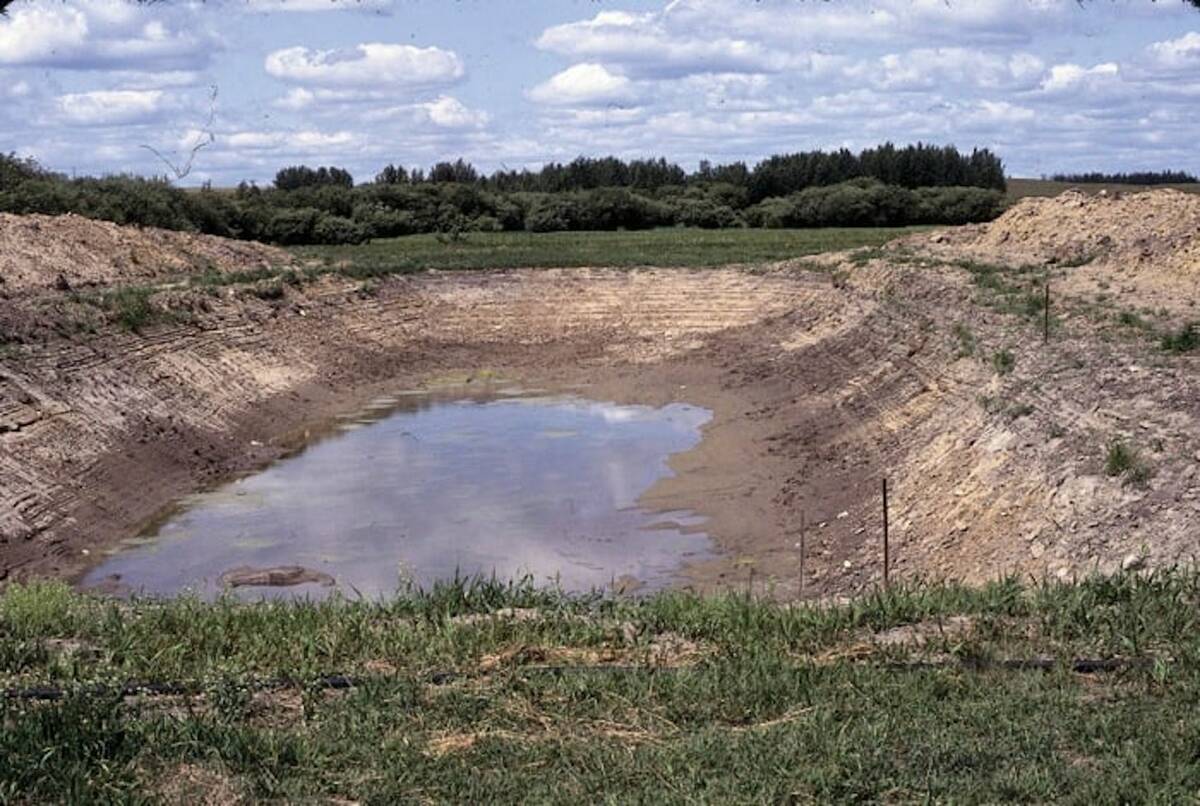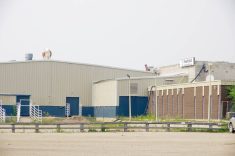Being rich in ideas but poor in cash has dogged ranchers hoping to build their own packing plants and move more beef since BSE closed borders 18 months ago.
For the new generation co-operative Ranchers’ Own Meat Processors, the cash shortage among producers has been a major drawback for a concept that already has business and marketing plans in place.
“While ranchers were almost unanimous in supporting the concept, the challenge of coming up with $5,000 to buy a share was difficult,” said organizer Stan Schellenberger of Spruce Grove, Alta.
Read Also

Dry summer conditions can lead to poor water quality for livestock
Drought conditions in the Prairies has led to an decrease in water quality, and producers are being advised to closely monitor water quality for their animals.
The group hired independent third party advisers to develop a marketing plan, business plan and share offer agreements.
“The hardest part six months ago was getting our marketing in place. Then it was getting the business plan done because no one would share information with us,” he said.
The co-op has some money in trust but needs about $10 million and 2,000 farmers participating. It is proposing ranchers borrow money using their culls as collateral.
The group is looking for lenders who would allow a rancher to deliver his cattle to the plant and then pay his membership fee from the initial 15 cows delivered. It cannot get direct funds from the provincial government but hopes to work with the Alberta Agricultural Financial Services Corp. to find a way to pay individuals’ fees.
The suggested value of the animals is 35 cents a pound.
“Hopefully it will be better than that. We have to use our best guess on this thing,” said Schellenberger.
The plan is to build a federally inspected cow and bull plant in central Alberta, probably in Parkland County in an industrial area to avoid zoning problems.
Cow and bull meat goes to the manufactured beef market for sandwich meats, beef jerky, sausage and ground meat. About 65,000 bulls are marketed in Canada each year and Schellenberger estimates 40 percent of them are in Alberta.
Becoming a producer-owned packer will be difficult.
“We have had a tremendous education in the cattle and slaughter business. We all thought we knew a little bit about it and then we realized that we knew very, very little,” Schellenberger said.
The group is working with federal regulators to avoid being caught off guard with unexpected requirements in a plant of this type.
“If you are building a new plant, surely you shouldn’t have any difficulties if you keep them on site,” he said.
Upgrading an old plant is not feasible. It is better to build new to ensure all building and health requirements are met.
Schellenberger is a retired federal and provincial politician who now runs about 250 cows. He is dubious about accepting any direct government involvement.
The government is trying to decide how to assess the best business plans and decide which are the most sustainable, so that when the border reopens the plants can continue.
“If they become too open with the cash, then we’ll get too many packing plants built and in the end they’ll all go broke.”
At the same time, Schellenberger believes a rancher co-op could potentially return some money to the investors rather than relying totally on privately owned multinational operations who are expanding.
“If it continues to be just private sector people, they don’t share that wealth if there is any,” he said.
The first planning meetings were held last March and a continuing series started again this fall and runs until Dec. 15 to assess interest in the countryside.
Also interested in building a federally regulated plant is the Beef Initiatives Group. It is holding producer meetings in Saskatchewan and Manitoba. Saskatchewan deputy premier Clay Serby has said his government would consider helping to fund a feasibility study.
Another meeting of the group will be held in Tisdale Oct. 28, which Saskatchewan agriculture minister Mark Wartman has promised to attend and hear the group’s proposals.
The group wants to build a plant with government loans and would offer 100 percent BSE testing.

















